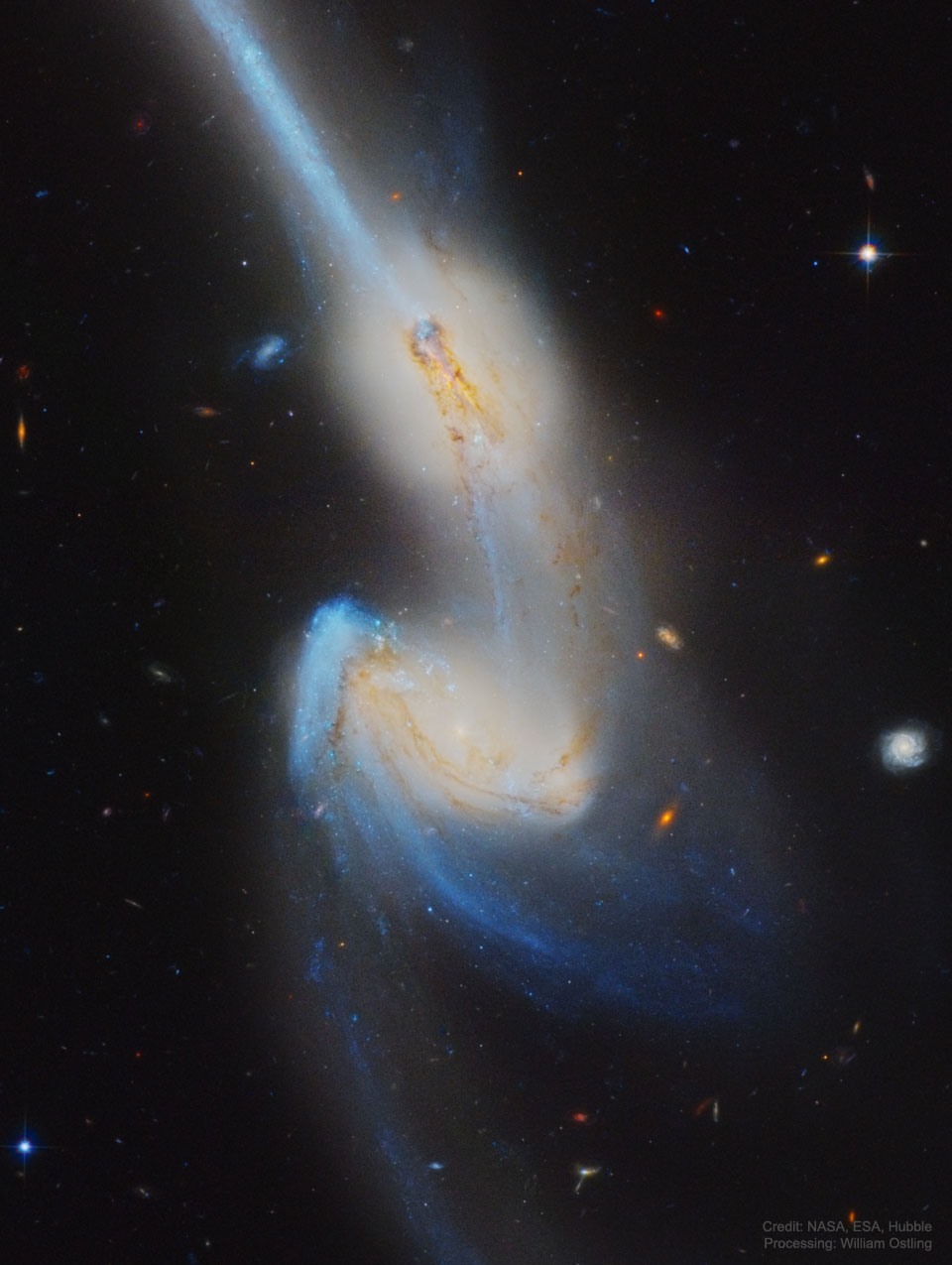2021年10月4日
NGC 4676: When Mice Collide
Image Credit: NASA, ESA, Hubble; Processing & Copyright: William Ostling (The Astronomy Enthusiast)
Explanation: These two mighty galaxies are pulling each other apart. Known as the “Mice” because they have such long tails, each spiral galaxy has likely already passed through the other. The long tails are created by the relative difference between gravitational pulls on the near and far parts of each galaxy. Because the distances are so large, the cosmic interaction takes place in slow motion — over hundreds of millions of years. NGC 4676 lies about 300 million light-years away toward the constellation of Bernice’s Hair (Coma Berenices) and are likely members of the Coma Cluster of Galaxies. The featured picture was taken with the Hubble Space Telescope’s Advanced Camera for Surveys in 2002. These galactic mice will probably collide again and again over the next billion years so that, instead of continuing to pull each other apart, they coalesce to form a single galaxy.
Follow APOD in English on: Facebook, Instagram, or Twitter
Tomorrow’s picture: polar sunrise
NGC4676: 老鼠星系
影像提供: NASA, ESA, Hubble; 影像处理与版权 : William Ostling (The Astronomy Enthusiast)
说明: 这两个大星系正把对方撕裂。它们皆拥有长长的尾巴,因此合称为”老鼠星系”,此外,这对大螺旋星系很可能都曾穿过对方。它们长出长尾的原因,是来自星系前端和后端受到的引力差(潮汐效应)。由于它们的距离非常远,所以这例宇宙级碰撞是一种慢动作过程,通常历时数亿年才会完成。编录号为NGC 4676的这对星系,位在后发座方向,离我们约有3亿光年远,二者都是后发座星系团的可能成员。这幅主题影像,是由哈勃太空望远镜的先进巡天相机摄于2002年。这对宇宙级的老鼠在接下来的数十亿年间,会不停反复碰撞,不过不会把对方撕裂,反而会合并成单一星系。
在以下网站上以英语关注APOD:Facebook、Instagram或Twitter
明日的图片: polar sunrise







